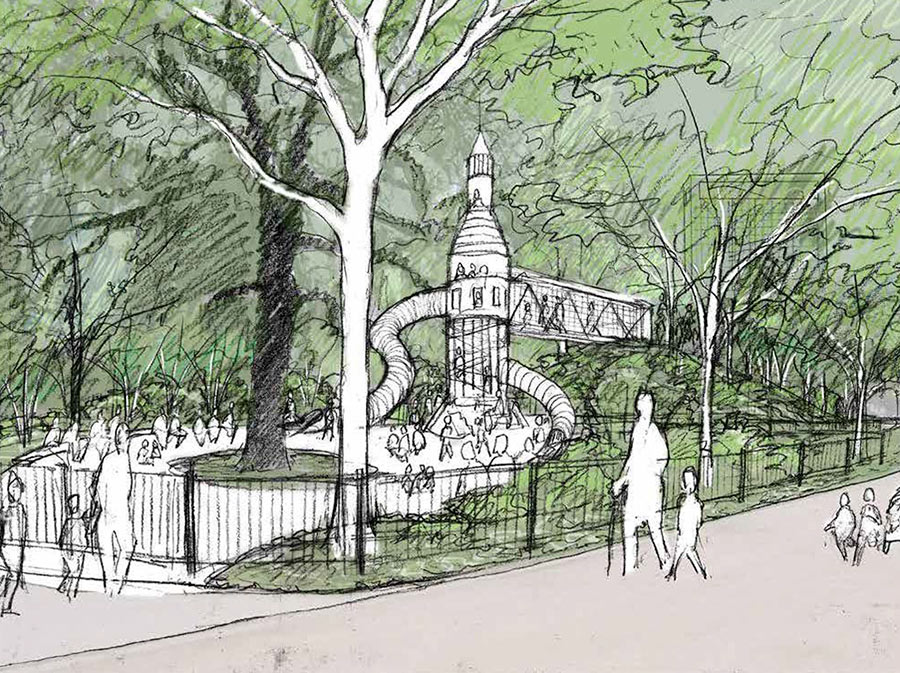A BRIGHT FUTURE FOR STREET BUSHES “A proposed ordinance before council would prohibit the planting of tall trees, including live oaks, under power lines. The measure originally was intended to strengthen existing rules to protect trees in public rights of way from being cut down or hacked up by developers. But the proposed ban on planting live oaks under electric lines — a last-minute addition to the measure — has a vocal group of tree lovers dismayed. Their main complaint centers on the live oak’s usefulness for hiding power lines. ‘If this were to pass, we would have to look a lot more at the ugliest feature of our city: power lines,’ said Hugh Kelly, a former general counsel for Houston Light & Power who advocated against the change on behalf of two neighborhood groups. ‘And we would not be able to look at one of the prettiest features: live oaks.'” [Houston Chronicle]




Yeah, anybody see that perspective photo over on HAIF that shows all the power lines running down Westheimer? What a great photo that is! (sarcasm) Somebody needs to show the morons at city council that made this proposal this picture plus one of Bayland in the Heights and see which scenario makes more sense.
I agree with the group. Oak trees in general are very adapt at being able to work with overhead power lines. The can be manicured so they still provide shade to sidewalks and cover the unserviceable sections of power lines.
Of course, more projects like Kirby Drive that will placed the lines underground so the new trees can grow uninhibited should be promoted.
I’d rather look at a few power lines or find other creative ways to disguise them than wait for the next hurricane to knock the tree over, break the power line, and go without power for two weeks.
If you’re worrying about hurricanes knocking over live oaks then I would suggest taking another look at Bayland in the Heights. The Heights was very badly hit in terms of downed trees during Ike but the Bayland canopy was, I think, completely untouched. To make the leap from the power outages of Ike to the conclusion “all trees are bad” is just typical short term political grandstanding. Our elected representatives need to put the effort into finding a real solution rather than just grabbing at the the closest knee-jerk reaction.
I’m familiar with Bayland and any number of other street lined with oaks that nicely hide power lines. However, those streets are also protected from winds by the houses. On streets like Kirby or anywhere that there has inadequate protection from wind gusts, oak trees do not fare so well.
While a 100% ban on planting below power lines may be excessive, I can also see the benefit. Considering the land below power lines is technically a right-of-way by the city, I can understand why they would choose to invoke this ordinance.
Although it may be unfortunate for some, planting trees slightly-not-under powerlines, burying some powerlines, or other creative disguises may be worthwhile solutions to consider.
During Ike, I had several trees fall on powerlines near my house that surely extended the time required to restore power and this clearly could have been mitigated by an ordinance such as this.
By the way, it’s not just oak trees (which arguably may be better suited for storms) under this ordinance but all trees. It makes things unnecessarily complicated to design a law around particular tree types.
Years ago, the late architect Burdette Keeland proposed using street plantings of crepe myrtles to help define neighborhoods. The color of the blooms would differ from neighborhood to neighborhood — magenta for one, purple for the adjacent subdivision, white for another nearby, etc. These trees do not grow to the height of power lines, are hardy in an urban environment, and if not subjected to “crepe murder” pruning can be shapely, attractive additions to any streetscape. Maybe it’s time to consider Mr. Keeland’s idea.